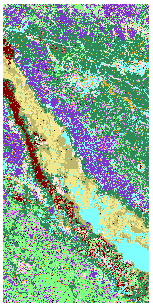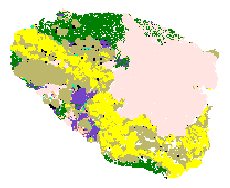APPLIED MINERALOGY AND GEOMETALLURGY OVERVIEW
Applied Mineralogy is a discipline of mineralogy by which the unknowns and problems encountered during different mining steps can be approached and solved
From the very first stages of exploration, Applied Mineralogy provides the necessary information to make decisions on how a project shall proceed to the next level. Mineralogy is used to characterize the ore body, identify and quantify target minerals and their gangue associations, and reveal the liberation, locking, and grain size of the target phases. Further, the data provided by Applied Mineralogy is essential for optimising recovery and mineral processing plans.
 In contrast to Process Mineralogy, an exploration sampling protocol is typically designed around a limited number of replicate polished sections, and on coarsely ground material derived from a conventional “assay reject” size sample (typically 95% passing 2 mm). The number of sample sections analysed depend on particle size, fundamental error (complexity of material) and the grade of the mineral of interest. For a cost-effective protocol, samples are typically stage-ground to a finer particle size (e.g. passing 600 microns) to reduce sampling and fundamental error and improve counting statistics. Further sample fractionation may be desirable based on the application.
In contrast to Process Mineralogy, an exploration sampling protocol is typically designed around a limited number of replicate polished sections, and on coarsely ground material derived from a conventional “assay reject” size sample (typically 95% passing 2 mm). The number of sample sections analysed depend on particle size, fundamental error (complexity of material) and the grade of the mineral of interest. For a cost-effective protocol, samples are typically stage-ground to a finer particle size (e.g. passing 600 microns) to reduce sampling and fundamental error and improve counting statistics. Further sample fractionation may be desirable based on the application.
Without due diligence and attention to appropriate sampling protocols, poor agreement between mineralogical and geochemical data may result. Therefore, we encourage you to discuss your requirements and expectations for value-added mineralogical services as applied to exploration so that we can tailor methods and protocols to meet your needs.


